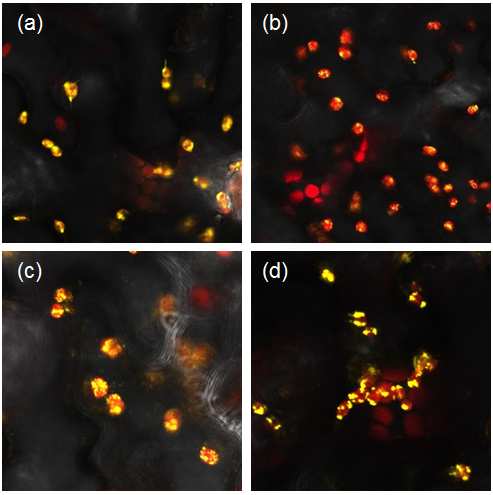Difference between revisions of "Part:BBa K1618028"
LedaCoelewij (Talk | contribs) (→NRP-UEA) |
LedaCoelewij (Talk | contribs) |
||
| Line 2: | Line 2: | ||
<partinfo>BBa_K1618028 short</partinfo> | <partinfo>BBa_K1618028 short</partinfo> | ||
| − | This is synthetic a 5'UTR, omega (Tobacco Mosaic Virus. The chloroplast transit peptide provides subcellular localisation to the chloroplast. | + | This is synthetic a 5'UTR, omega (Tobacco Mosaic Virus. The chloroplast transit peptide provides subcellular localisation to the chloroplast. It is assembled in a Golden Gate Universal Acceptor Plasmid (pUAP1) in the pSB1C3 backbone according to RFC 106. It is a Golden Gate part in the plant standard syntax, not a BioBrick. |
Revision as of 14:16, 17 September 2015
Chloroplast Transit Peptide
This is synthetic a 5'UTR, omega (Tobacco Mosaic Virus. The chloroplast transit peptide provides subcellular localisation to the chloroplast. It is assembled in a Golden Gate Universal Acceptor Plasmid (pUAP1) in the pSB1C3 backbone according to RFC 106. It is a Golden Gate part in the plant standard syntax, not a BioBrick.
The Chloroplast Transit Peptide was used by NRP-UEA 2015 House of Carbs. It was used in 8 composite constructs in order to make sure that the parts reached the chloroplast, where starch is produced. For 4 of these constructs, a Yellow Fluorescent Protein tag was added, in order to visualise if the parts did in fact reach the chloroplast. Using a confocal microscope, they obtained the following images, in which the chloroplast is red and our protein with the fluorescent tag is yellow.
Figure 1: Constructs BBa_K1618029-032 contain a yellow fluorescent protein, as well as a chloroplast transit peptide. These are confocal microscopy images of the constructs infiltrated into Nicotiana benthamiana, in which the red stains are the chloroplast, and the yellow fluorescence is construct (a) BBa_K1618029, (b) BBa_K1618031, (c) BBa_K1618032, and (d) BBa_K1618030
The results above suggest that the chloroplast transit peptide is functional in regards to the localisation of parts to the chloroplast.

